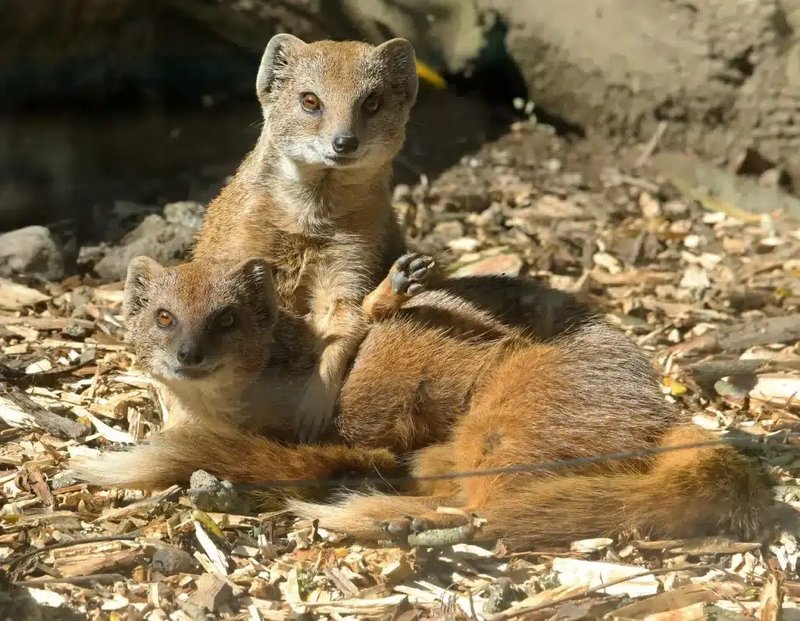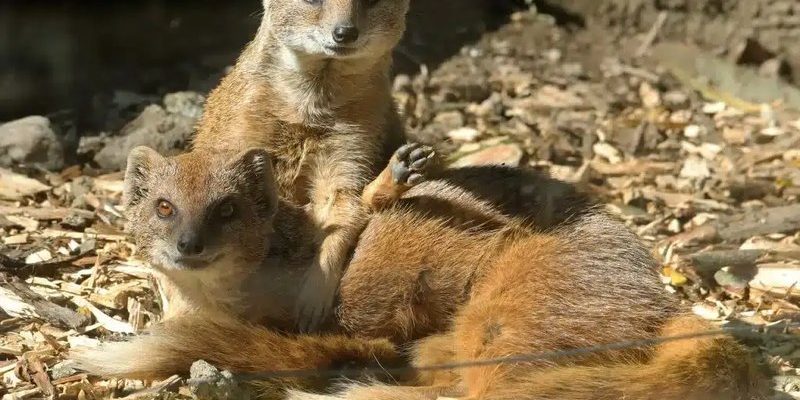
So, what exactly is the yellow mongoose? Well, it’s a small member of the mongoose family, native to Southern Africa. With its striking yellowish fur and playful demeanor, this species captures the hearts of wildlife enthusiasts everywhere. Let’s dive into the fascinating world of the yellow mongoose and explore its evolutionary history, from its ancestors to its current adaptations.
The Ancestry of the Yellow Mongoose
To understand the yellow mongoose, we need to go back in time—way back, to its ancestors. The yellow mongoose belongs to the family Herpestidae. This family includes various species of mongooses, beloved for their cleverness and agility. Around 25 million years ago, the earliest ancestors of today’s mongooses began to appear. They were small, weasel-like creatures that roamed the forests and grasslands.
As these ancestors evolved, they adapted to different environments. Some mongooses became more solitary, while others formed tight-knit social groups. The yellow mongoose, specifically, likely branched off from a common ancestor with other African mongooses about 5 to 10 million years ago. This gave rise to its unique characteristics—like its stunning yellow coat that provides excellent camouflage among the grasslands.
Physical Features That Tell a Story
When we think about evolution, we often picture changes in size or shape. For the yellow mongoose, physical features play a crucial role in its survival. First off, its **yellowish fur** isn’t just pretty—it blends perfectly into the golden grasses of its habitat. This is crucial for avoiding predators and sneaking up on prey.
Additionally, yellow mongooses have a long, slender body, perfect for darting through grass and burrowing into the earth. They also possess sharp claws and teeth, which help them catch insects and small rodents. Here’s the thing: each physical feature of the yellow mongoose tells us about the environments it has lived in and the challenges it’s faced.
Social Structure and Behavior
You might find it interesting that yellow mongooses are quite social for their size. They often live in family groups called “mobs,” which can consist of up to 20 individuals. This social structure is important for their survival. Living in groups helps them keep watch for predators and increases their success when hunting for food.
The yellow mongoose’s behavior is also fascinating. They communicate through various vocalizations, including chirps and growls, which help maintain social bonds within the group. Picture a team of friends helping each other out; that’s what these mongooses do. From cooperative hunting to grooming each other’s fur, their social interactions illustrate their evolutionary adaptations.
Habitat and Geographic Distribution
The yellow mongoose calls the savannas, grasslands, and scrub regions of Southern Africa home. Its range spans several countries, including South Africa, Namibia, and Botswana. It’s remarkable how this species has adapted to various habitats—evolving to thrive in both dry and wet conditions.
In these habitats, yellow mongooses often create extensive burrow systems. They dig complex tunnels and chambers, providing shelter from harsh weather and predators. These burrows are like their safe havens, a testament to their ability to adapt to their surroundings.
Diet and Feeding Habits
Let’s chat about what the yellow mongoose eats. As omnivores, they have a varied diet consisting mainly of insects, small mammals, and even fruit. Their keen eyesight and hearing help them locate food, making them skilled hunters.
What’s interesting is that they also demonstrate **foraging strategies**. For example, they might work together in their mobs to flush out insects or rodents from their hiding spots. This cooperative behavior not only showcases their intelligence but also solidifies their social bonds. It’s kind of like a family dinner—everyone pitches in to grab the meal.
Conservation Status and Threats
Despite their adaptability, yellow mongooses face threats in the wild. Habitat loss due to agriculture and urban development is a significant concern. Additionally, they are sometimes hunted for their fur or as a result of human-wildlife conflict.
Conservation efforts are essential to ensure that future generations can enjoy the yellow mongoose in its natural habitat. Understanding their evolutionary history helps us appreciate why protecting them matters. After all, they’ve been evolving for millions of years, and it would be a shame to let that story fade away.
The Future of the Yellow Mongoose
Looking ahead, the future of the yellow mongoose depends on how we balance human activities with wildlife conservation. By educating ourselves about their needs and habitats, we can help protect these captivating creatures. Here’s the thing: every small action counts. Supporting conservation efforts or simply learning about their ecological role can contribute to their survival.
As we learn more about the evolutionary history of the yellow mongoose, we gain valuable insights into the natural world. Their story is a reminder of resilience and adaptation, highlighting the importance of preserving biodiversity.
In conclusion, the yellow mongoose is not just a cute critter from Africa; it’s a species with a rich evolutionary background that reflects the ever-changing tapestry of life on Earth. So next time you see one in a documentary or read about it online, remember—it’s more than just a small animal; it’s a living piece of history.

